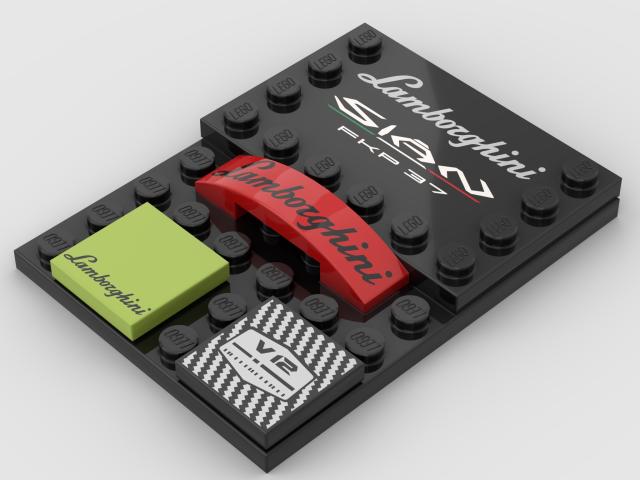My question pertains to patterned parts/stickers. Once you add pattern to the curved part, even if the original curvature of the sticker could have been represented with a primitive the new, color specific elements simply cannot.
At what angular resolution should the resulting sticker/part be exported at using nothing but a poly-mesh of triangles?
Also, for curved stickers/patterns is the preferred method to create ldraw mesh for them or is it better to use the PNG map instead?
Next question: what should be the smallest triangle face length on a patterned part or is there a general guideline as to the number of vertexes a part should have?
Last question:
How do you handle a part with sides that are curved primitives (semi circles) but the patterned curved side being defined using only triangles? 22.5 degree seems rather low for the curved part but leaving the sides as primitives is more ideal, however the rendered curved patterned part (see the Sian brake calipers) must match up to it and if it's done at a higher resolution things look weird in LDCad bit if it's rendered at only 22.5 degree faces it looks poor when rendered in Stud.io.
I have created a few patterned pieces already but I want to make sure they're matching guideline standards before I even make an attempt at submitting them.

At what angular resolution should the resulting sticker/part be exported at using nothing but a poly-mesh of triangles?
Also, for curved stickers/patterns is the preferred method to create ldraw mesh for them or is it better to use the PNG map instead?
Next question: what should be the smallest triangle face length on a patterned part or is there a general guideline as to the number of vertexes a part should have?
Last question:
How do you handle a part with sides that are curved primitives (semi circles) but the patterned curved side being defined using only triangles? 22.5 degree seems rather low for the curved part but leaving the sides as primitives is more ideal, however the rendered curved patterned part (see the Sian brake calipers) must match up to it and if it's done at a higher resolution things look weird in LDCad bit if it's rendered at only 22.5 degree faces it looks poor when rendered in Stud.io.
I have created a few patterned pieces already but I want to make sure they're matching guideline standards before I even make an attempt at submitting them.












